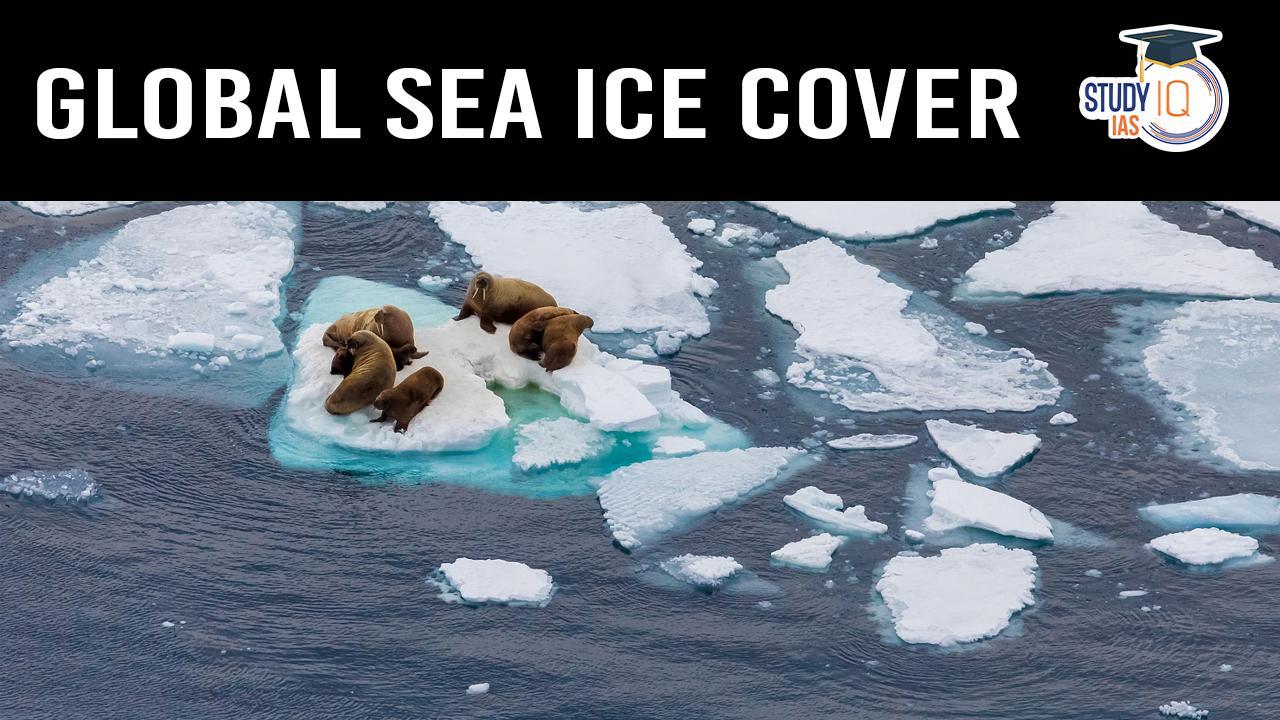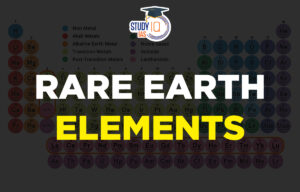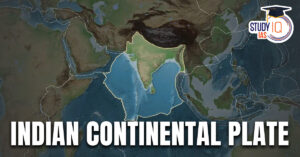Table of Contents
Context: Global Sea Ice Cover dropped to a record low of 15.76 million sq km in February 2025.
What is Sea Ice?
- Sea ice refers to free-floating ice in the polar regions, formed when ocean water freezes.
- It is different from: Icebergs, glaciers, ice sheets, and ice shelves, which originate from land.
- Seasonal Changes:
- Expands in winter and melts in summer.
- Some sea ice remains year-round.
Historical Trends in Sea Ice Decline
Arctic Sea Ice Loss
Shrinking at a rate of 12.2% per decade.
- Since the late 1970s: Arctic sea ice has been declining rapidly.
- An estimated 77,800 sq km of sea ice is lost every year.
- Current Situation: Arctic sea ice is at its lowest recorded extent for this time of year.
Antarctic Sea Ice Loss
- Different Trend Until 2015: Antarctic sea ice increased slightly year-on-year.
- 2014-2017: Antarctica lost 2 million sq km of sea ice, equal to four times the size of Spain.
- 2023: Antarctic sea ice reached historically low maximum levels.
- 2024-2025: Ice cover improved slightly from 2023 but still 55 million sq km below the 1981–2010 average.
What is Causing the Record-Low Ice Cover?
Arctic Factors
- Warmer ocean waters: Oceans are taking longer to cool, delaying sea ice formation.
- Storms in the Barents and Bering Seas: Thinner ice is more fragile and breaks apart easily.
- Higher-than-normal air temperatures: Particularly in Svalbard (Norway), and Hudson Bay (Canada).
Antarctic Factors
- Ice-breaking winds: Unlike the Arctic (surrounded by land), Antarctic sea ice is surrounded by the ocean, making it more mobile and thinner.
- Warmer air and water temperatures: More melting at the edges of the ice sheet (ice shelves).
Consequences of Declining Sea Ice
Accelerated Global Warming
- Less ice = more heat absorption:
- White sea ice reflects sunlight back into space.
- Darker ocean water absorbs more heat, leading to higher temperatures.
- Polar regions are warming faster than the rest of the world.
Impact on Ocean Currents & Global Climate
- Melting ice releases freshwater into the ocean.
- Lower salinity and density: Reduces the downward flow of surface water & Slows ocean overturning circulation.


 Rare Earth Elements, Metals, Magnets, Ap...
Rare Earth Elements, Metals, Magnets, Ap...
 Places in News for UPSC 2025 for Prelims...
Places in News for UPSC 2025 for Prelims...
 Indian Continental Plate is Splitting Ap...
Indian Continental Plate is Splitting Ap...





















